Stylizing a New Color
by Lawrence Davis | Department Head Hair
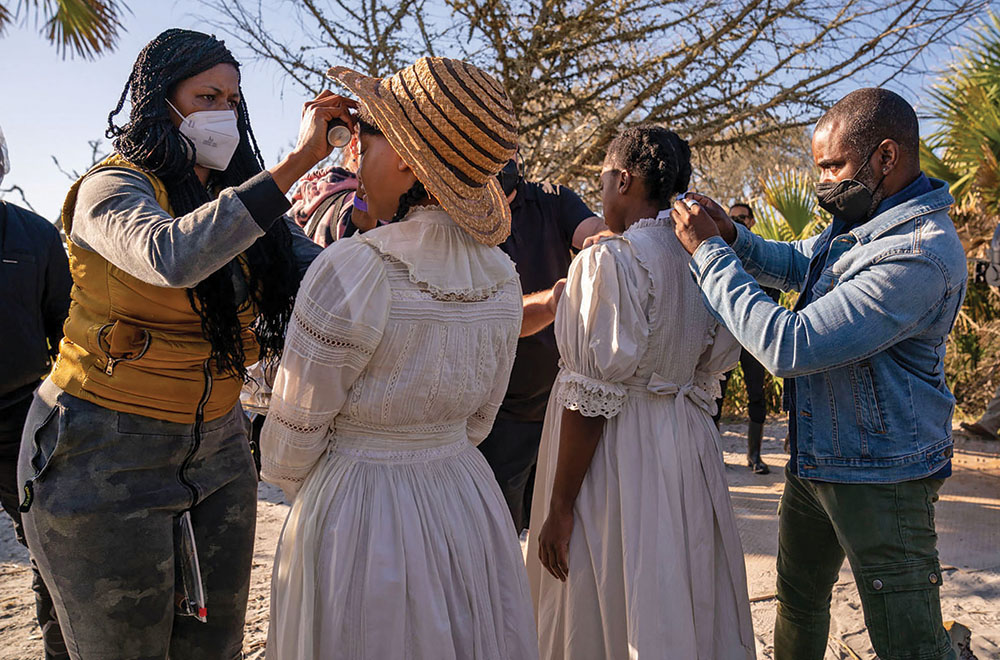 When I got the call for The Color Purple from producers Scott Sanders and Oprah Winfrey, I was honored and thrilled. I was excited and definitely familiar with the story behind this beautiful project, a classic in the African American community, and I wanted to be as authentic as possible with every hair detail. After meeting with our amazing director, Blitz Bazawule, and learning what his approach was to this new version of an old story, I was thrilled and wanted to deliver exactly what he needed.
When I got the call for The Color Purple from producers Scott Sanders and Oprah Winfrey, I was honored and thrilled. I was excited and definitely familiar with the story behind this beautiful project, a classic in the African American community, and I wanted to be as authentic as possible with every hair detail. After meeting with our amazing director, Blitz Bazawule, and learning what his approach was to this new version of an old story, I was thrilled and wanted to deliver exactly what he needed.
Because The Color Purple is a period film, it needed to be accurate and period-appropriate. Because this version is a musical also, the dancing and singing played a huge part of the storytelling; whether it be an up tempo celebratory dance or a fight scene, the hair needed to stay in place.
Texture played an important role in the delivery of a lot of the hair styles worn in the film. It also was a lifesaver when it came to the heat and humidity encountered while filming mid-summer in the south.
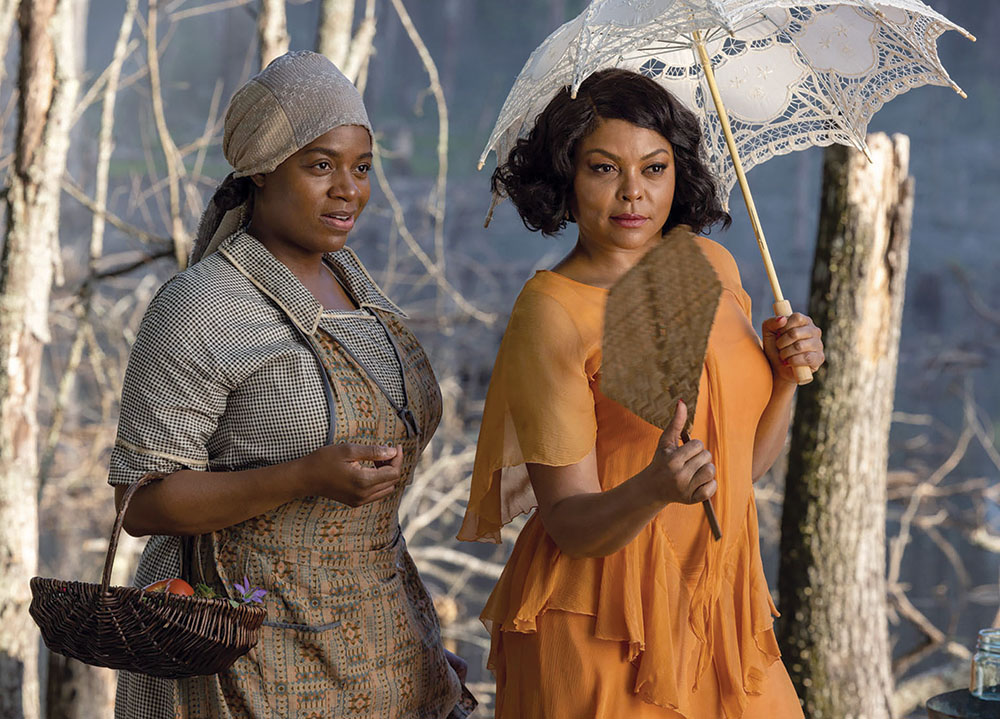
Our lead actress, Fantasia Barrino, magnificently played the role of Celie, an African American woman living in rural Georgia in the early 20th century. She wore a custom full-lace wig that was built with 3-4 textures of hair. Kinky edges on this wig were a must for me as a hair stylist. This gave more realism. I slowly and carefully applied this wig, making sure the lace adhered in the midst of the heat and humidity. I found that after a while, it seemed to melt into the skin invisibly, but was at times challenging to get off at the end of the day. I welcomed her glamorous press-and-curl bob hair style worn in her fantasy scene, as well as her beautiful natural textured pin-up she wore as her character evolved.
My imagination of her character, and her character’s imagination of herself, allowed me to be able to take her homely normal look to more glamorous hair styles as she daydreamed and fantasized about the love she had for Shug Avery.
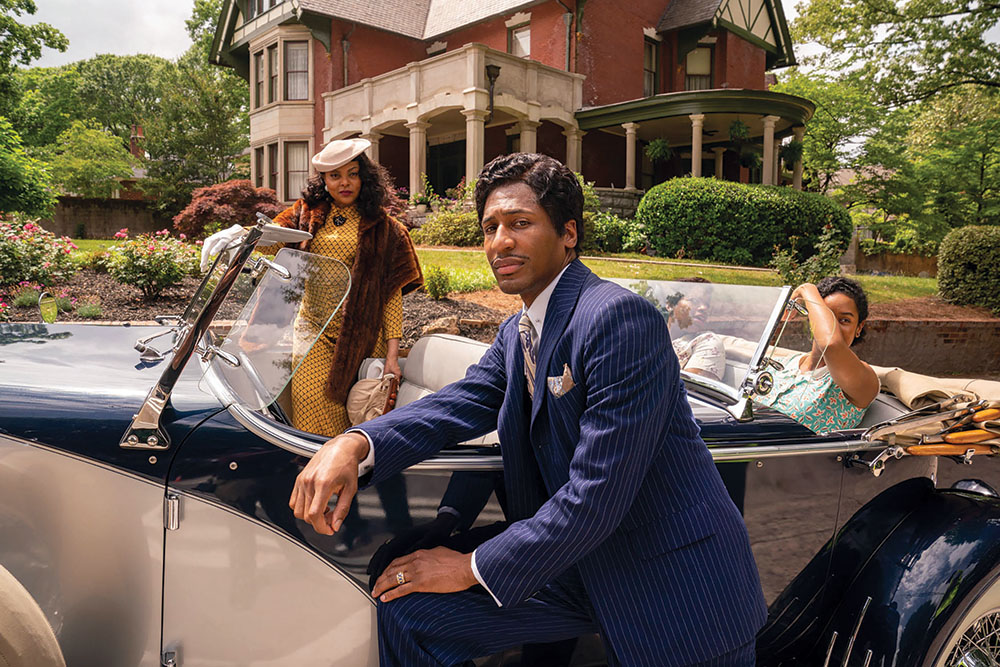
This role of Shug Avery was played by Taraji P. Henson, an entertainer who lived her unapologetic life to the fullest. For an entertainer in the ’20s and ’30s, her image was everything. Shug Avery’s hair was styled by hair stylist Tym Wallace. She wore human hair wigs styled into soft waves, occasionally beautifully pinned up throughout the film. She was always impeccably dressed for any occasion.
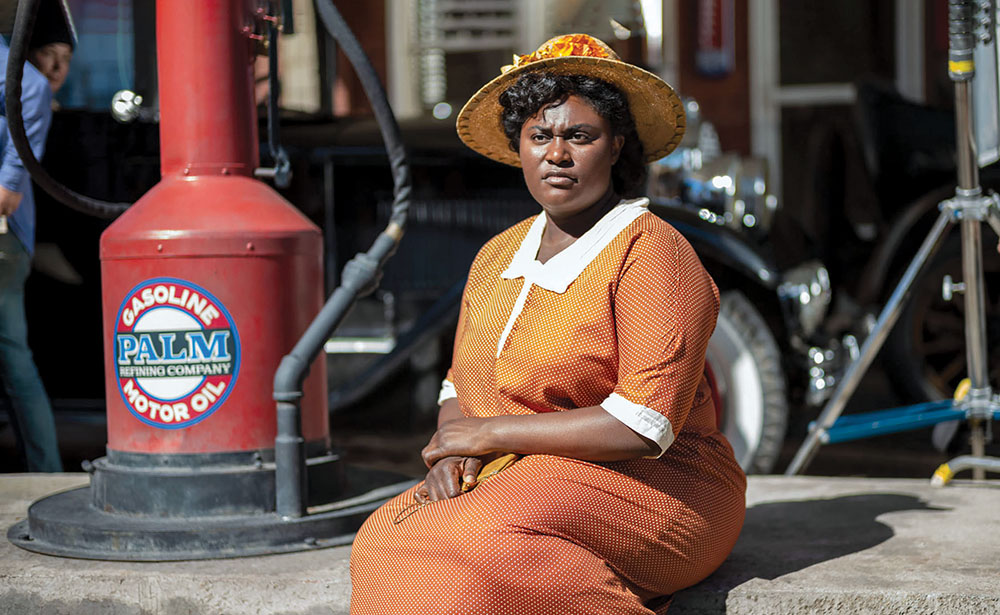
Sofia was a character played by Danielle Brooks. She was a well-groomed and powerful woman. Sofia was the only other friend Celie had, and their friendship served as a source of inspiration and empowerment, highlighting the importance of community and mutual support.
The thermal press-and-curl she wore was her attempt at showing her femininity and independence in the 1920s and 1930s. Not doing a silk press on the human hair wig worn by her character was the perfect approach for blending Danielle’s natural hairline into the front of it, allowing the heat and humidity to be a non-threatening thing when it came to filming outside.
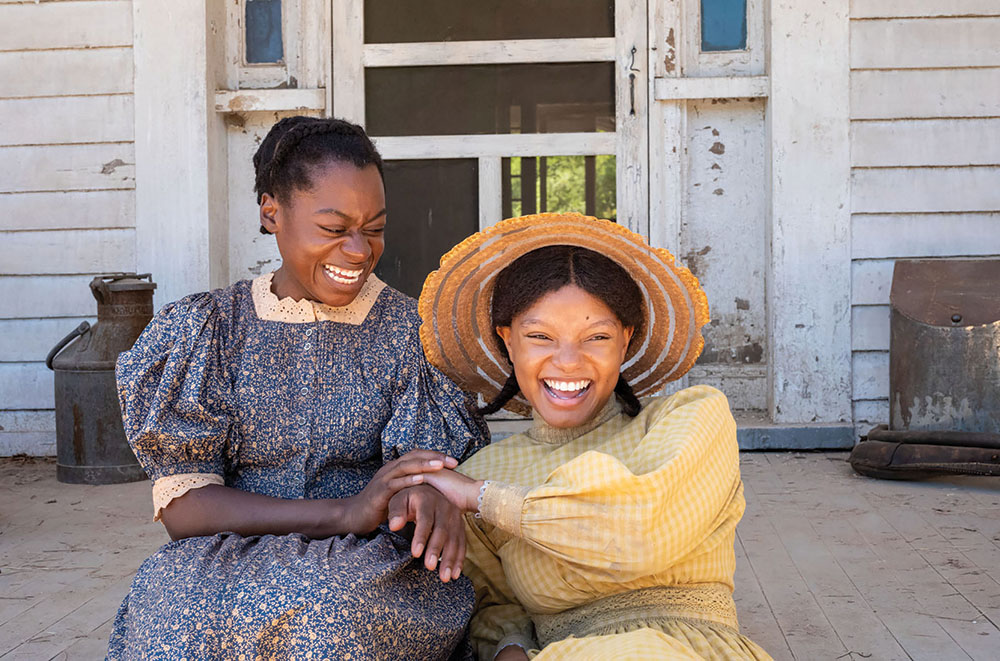
as Nettie
When it came to the male characters in the film, I wanted to make sure the changes were subtle, but still important in telling their stories. The role of Mister was played by Colman Domingo. This character wore a natural tapered haircut that occasionally changed into a well-coiffed side-parted style. This was his attempt to seek favor from Shug Avery, his longtime on-and-off side woman. As the character aged, I added gray follicles/fibers throughout to show the process.
The role of Harpo was played by Corey Hawkins. Having a beautiful, thick, natural texture was a plus for me. By moisturizing and adding a center or side part to his hair, I was able to tell his story and go along his life journey with subtle yet important changes.
The role of entertainer Grady was played by real-life musician Jon Batiste. He was well-groomed and wore what was called Congolene in that era. Although hair textures vary in the African American community, to achieve the texture needed for this character, a custom lace wig was side-parted, then sculpted in waves with a standard comb and a rat tail comb. Grady’s character was considered glamorous for a man. •

